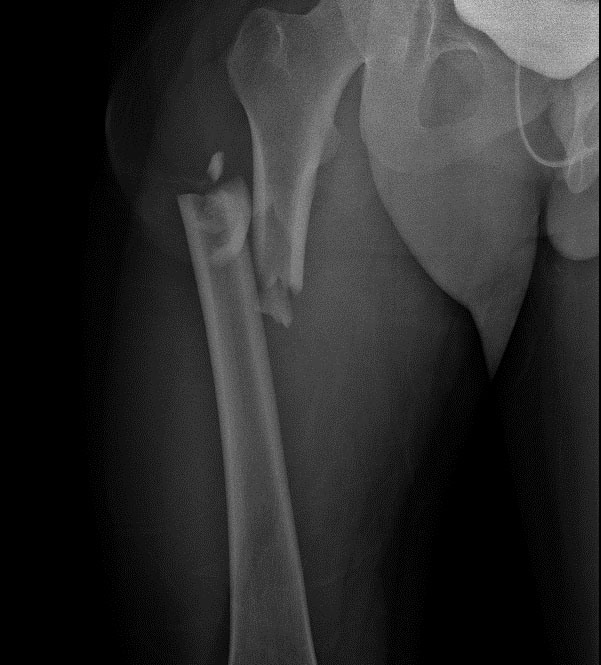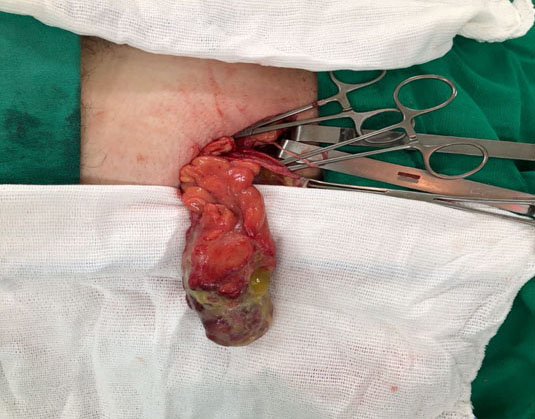 |
Case Report
Fatal arrhythmias despite early recognized successful treatment of digoxin toxicity
1 DO, Internal Medicine Chief Resident, MercyOne North Iowa Internal Medicine Residency, Mason City, Iowa, USA
2 Third Year Osteopathic Medical Student (OMS3), Des Moines University College of Osteopathic Medicine, Des Moines, Iowa, USA
3 MD, Internal Medicine Faculty Attending, MercyOne North Iowa Internal Medicine Residency, Mason City, Iowa, USA
Address correspondence to:
Babajide Adio
DO, 1000 4th St SW, Mason City, Iowa 50401,
USA
Message to Corresponding Author
Article ID: 100080Z06BA2020
Access full text article on other devices

Access PDF of article on other devices

How to cite this article
Adio B, Strandlund SJ, Delaney TP. Fatal arrhythmias despite early recognized successful treatment of digoxin toxicity. Case Rep Int 2020;9:100080Z06BA2020.ABSTRACT
Introduction: Digoxin is used to treat severe systolic heart failure and atrial fibrillation. Due to its narrow therapeutic window, toxicity has been well documented. Prompt treatment with the reversal agent, Digoxin Immune Fab is required in cases of digoxin toxicity to decrease mortality. However, little is known regarding the sequela following immediate successful reversal of toxicity. We report the case of a patient who developed potentially fatal ventricular arrhythmias following early recognized successful treatment of digoxin toxicity with Digoxin Immune Fab.
Case Report: We report a case of a 69-year-old man with a history of systolic heart failure and atrial fibrillation who presented with altered mental status and gait instability. Polypharmacy was first considered; hence his medications were discontinued, or dose adjusted. Normal pressure hydrocephalus was another diagnosis considered. However, when laboratory data revealed elevated potassium of 5.2 mmol/L, acute kidney injury, elevated serum digitalis at 2.6 ng/mL, prompt diagnosis of digoxin toxicity was made. Digoxin Immune Fab was administered with immediate improvement of patient’s symptoms and labs. However, he experienced runs of ventricular tachycardia and supraventricular tachycardia with aberrancy in the days following. The patient then had further cardiac work-up requiring transfer to a tertiary care center for an ablation procedure.
Conclusion: While arrhythmias associated with digoxin toxicity have been well documented, little is known of delayed arrhythmias following the use of a reversal agent. We report a rare case of potentially fatal delayed ventricular arrhythmias after early recognized successful treatment of digoxin toxicity with Digoxin Immune Fab.
Keywords: Digoxin Immune Fab, Digoxin toxicity, Hyperkalemia, Ventricular arrhythmias
SUPPORTING INFORMATION
Author Contributions
Babajide Adio - Substantial contributions to conception and design, Acquisition of data, Analysis of data, Interpretation of data, Drafting the article, Revising it critically for important intellectual content, Final approval of the version to be published
Sara J Strandlund - Substantial contributions to conception and design, Acquisition of data, Analysis of data, Interpretation of data, Drafting the article, Final approval of the version to be published
Thomas P Delaney - Substantial contributions to conception and design, Revising it critically for important intellectual content, Final approval of the version to be published
Guaranter of SubmissionThe corresponding author is the guarantor of submission.
Source of SupportNone
Consent StatementWritten informed consent was obtained from the patient for publication of this article.
Data AvailabilityAll relevant data are within the paper and its Supporting Information files.
Conflict of InterestAuthors declare no conflict of interest.
Copyright© 2020 Babajide Adio et al. This article is distributed under the terms of Creative Commons Attribution License which permits unrestricted use, distribution and reproduction in any medium provided the original author(s) and original publisher are properly credited. Please see the copyright policy on the journal website for more information.





